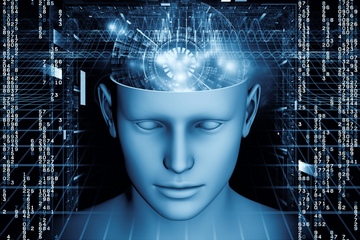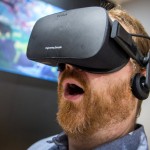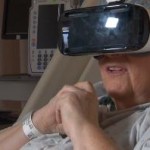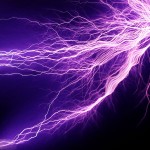
By Tanya Lewis
Probably for as long as humans have been able to grasp the concept of consciousness, they have sought to understand the phenomenon.
Studying the mind was once the province of philosophers, some of whom still believe the subject is inherently unknowable. But neuroscientists are making strides in developing a true science of the self.
Here are some of the best contenders for a theory of consciousness.
Cogito ergo sum
Not an easy concept to define, consciousness has been described as the state of being awake and aware of what is happening around you, and of having a sense of self. [Top 10 Mysteries of the Mind]
The 17th century French philosopher René Descartes proposed the notion of “cogito ergo sum” (“I think, therefore I am”), the idea that the mere act of thinking about one’s existence proves there is someone there to do the thinking.
Descartes also believed the mind was separate from the material body — a concept known as mind-body duality — and that these realms interact in the brain’s pineal gland. Scientists now reject the latter idea, but some thinkers still support the notion that the mind is somehow removed from the physical world.
But while philosophical approaches can be useful, they do not constitute testable theories of consciousness, scientists say.
“The only thing you know is, ‘I am conscious.’ Any theory has to start with that,” said Christof Koch, a neuroscientist and the chief scientific officer at the Allen Institute for Neuroscience in Seattle.
Correlates of consciousness
In the last few decades, neuroscientists have begun to attack the problem of understanding consciousness from an evidence-based perspective. Many researchers have sought to discover specific neurons or behaviors that are linked to conscious experiences.
Recently, researchers discovered a brain area that acts as a kind of on-off switch for the brain. When they electrically stimulated this region, called the claustrum, the patient became unconscious instantly. In fact, Koch and Francis Crick, the molecular biologist who famously helped discover the double-helix structure of DNA, had previously hypothesized that this region might integrate information across different parts of the brain, like the conductor of a symphony.
But looking for neural or behavioral connections to consciousness isn’t enough, Koch said. For example, such connections don’t explain why the cerebellum, the part of the brain at the back of the skull that coordinates muscle activity, doesn’t give rise to consciousness, while the cerebral cortex (the brain’s outermost layer) does. This is the case even though the cerebellum contains more neurons than the cerebral cortex.
Nor do these studies explain how to tell whether consciousness is present, such as in brain-damaged patients, other animals or even computers. [Super-Intelligent Machines: 7 Robotic Futures]
Neuroscience needs a theory of consciousness that explains what the phenomenon is and what kinds of entities possess it, Koch said. And currently, only two theories exist that the neuroscience community takes seriously, he said.
Integrated information
Neuroscientist Giulio Tononi of the University of Wisconsin-Madison developed one of the most promising theories for consciousness, known as integrated information theory.
Understanding how the material brain produces subjective experiences, such as the color green or the sound of ocean waves, is what Australian philosopher David Chalmers calls the “hard problem” of consciousness. Traditionally, scientists have tried to solve this problem with a bottom-up approach. As Koch put it, “You take a piece of the brain and try to press the juice of consciousness out of [it].” But this is almost impossible, he said.
In contrast, integrated information theory starts with consciousness itself, and tries to work backward to understand the physical processes that give rise to the phenomenon, said Koch, who has worked with Tononi on the theory.
The basic idea is that conscious experience represents the integration of a wide variety of information, and that this experience is irreducible. This means that when you open your eyes (assuming you have normal vision), you can’t simply choose to see everything in black and white, or to see only the left side of your field of view.
Instead, your brain seamlessly weaves together a complex web of information from sensory systems and cognitive processes. Several studies have shown that you can measure the extent of integration using brain stimulation and recording techniques.
The integrated information theory assigns a numerical value, “phi,” to the degree of irreducibility. If phi is zero, the system is reducible to its individual parts, but if phi is large, the system is more than just the sum of its parts.
This system explains how consciousness can exist to varying degrees among humans and other animals. The theory incorporates some elements of panpsychism, the philosophy that the mind is not only present in humans, but in all things.
An interesting corollary of integrated information theory is that no computer simulation, no matter how faithfully it replicates a human mind, could ever become conscious. Koch put it this way: “You can simulate weather in a computer, but it will never be ‘wet.'”
Global workspace
Another promising theory suggests that consciousness works a bit like computer memory, which can call up and retain an experience even after it has passed.
Bernard Baars, a neuroscientist at the Neurosciences Institute in La Jolla, California, developed the theory, which is known as the globalworkspace theory. This idea is based on an old concept from artificial intelligence called the blackboard, a memory bank that different computer programs could access.
Anything from the appearance of a person’s face to a memory of childhood can be loaded into the brain’s blackboard, where it can be sent to other brain areas that will process it. According to Baars’ theory, the act of broadcasting information around the brain from this memory bank is what represents consciousness.
The global workspace theory and integrated information theories are not mutually exclusive, Koch said. The first tries to explain in practical terms whether something is conscious or not, while the latter seeks to explain how consciousness works more broadly.
“At this point, both could be true,” Koch said.
Follow Tanya Lewis on Twitter and Google+. Follow us @livescience, Facebook & Google+. Original article on Live Science.








